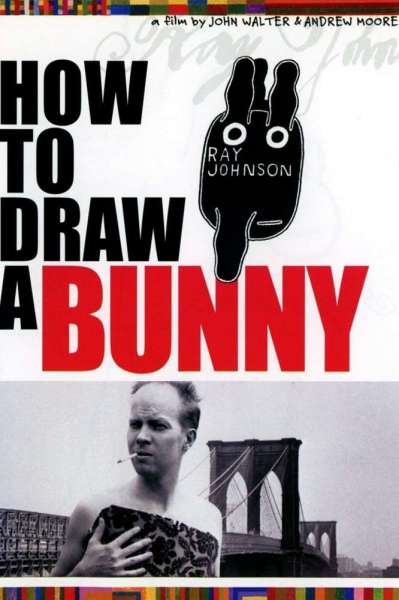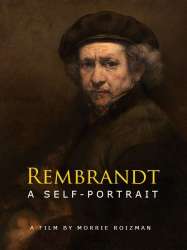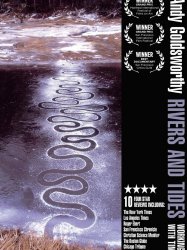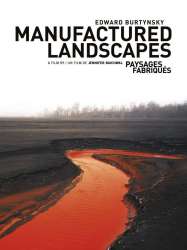How to Draw a Bunny is a american film of genre Documentary released in USA on 1 january 2002
How to Draw a Bunny (2002)

If you like this film, let us know!
- Infos
- Casting
- Technical infos
- Photos
- Videos
- Film quotes
- Characters
- Music
- Awards
How to Draw a Bunny: A Ray Johnson Portrait, is a collage-style feature-length documentary about the Detroit-born pop and performance artist Ray Johnson. Filmmakers John Walter and Andrew L. Moore delve into the mysterious life and death of Johnson, an artist whose “world was made up of amazing coincidences, serendipities and karmic gags,” according to Michael Kimmelman of The New York Times. After Johnson’s suicide, Moore and Walter conducted interviews with artists including Christo, Chuck Close, Roy Lichtenstein, Judith Malina, and James Rosenquist. In addition, they gathered photographs, works of art, and home movies, which were edited into a fast-paced narrative exploring the artist’s life. The filmmakers “couldn’t have chosen a more elusive subject for a movie; their success in evoking Johnson, and in documenting his world, is a triumph of sympathy over psychology, memory over historicism,” wrote Stuart Klawans for The Nation. The film premiered at the 2002 Sundance Film Festival, where it won the Special Jury Prize. The film also won the Grand Prix du Public 2002 at the Rencontres Internationales de Cinema in Paris and was nominated for a 2003 Independent Spirit Award and listed in New York Magazine’s “Top Ten of 2004.
Comments
Leave comment :
Suggestions of similar film to How to Draw a Bunny
There are 8962 with the same cinematographic genres, 2533 films with the same themes (including 136 films with the same 2 themes than How to Draw a Bunny), to have finally 70 suggestions of similar films.If you liked How to Draw a Bunny, you will probably like those similar films :
 , 1h10
, 1h10Directed by Robert Flaherty
Origin German
Genres Biography, Documentary
Themes Documentary films about the visual arts, Documentaire sur une personnalité
Actors Fredric March
Rating69%





 , 1h33
, 1h33Origin France
Genres Documentary
Themes Documentary films about business, Documentary films about the visual arts, Documentary films about the film industry, Documentaire sur une personnalité
Actors Moustapha Alassane
Moustapha Alassane is a living legend in African cinema. His adventures take us to the era of “pre-cinema”, to the times of magical lantern and Chinese shadows. He is the first director of Nigerien cinema and animation films in Africa. He tells very old stories with current technology, but he also narrates the most current events with the most archaic means. This documentary not only tells the adventure of a human being and an extraordinary professional, but the memories of a generation, the history of a country, Niger, in its golden age of cinema.
 , 1h26
, 1h26Origin USA
Genres Documentary
Themes Documentary films about the visual arts, Documentaire sur une personnalité
Actors Carol Channing, Lauren Bacall, Barbara Walters, Joan Collins, Julie Andrews, Robert Goulet
Rating72%





 , 1h
, 1hGenres Documentary
Themes Documentary films about the visual arts, Documentaire sur une personnalité
Rating78%





The documentary chronicles the artist Chuck Connelly as he struggles with his temperament, alcoholism, and disillusionment with reality. These factors culminate in the alienation of gallery owners, collectors, and his wife; serving to depress Connelly further. The documentary details the tragedy of the fallen artist as he fights to maintain his dignity and integrity in the face of a world that refuses to accept him.

Rembrandt: A Self-Portrait (1954)
Origin USA
Genres Documentary
Themes Documentary films about the visual arts, Documentaire sur une personnalité
Rating64%






Cinematographer Style (2006)
, 1h26Origin USA
Genres Documentary
Themes Documentary films about business, Documentary films about the visual arts, Documentary films about the film industry, Documentaire sur une personnalité
Actors Remi Adefarasin, Roger Deakins, Michael Ballhaus, Dion Beebe, Dean Cundey, Allen Daviau
Rating68%





110 des meilleurs directeurs de la photographie du monde discutent de l'art de savoir comment et pourquoi les films ont l'apparence qu'ils ont.
 , 1h36
, 1h36Genres Documentary
Themes Documentary films about the visual arts, Documentaire sur une personnalité
Rating75%






Rivers and Tides (2001)
, 1h30Origin United-kingdom
Genres Documentary
Themes Documentary films about the visual arts, Documentaire sur une personnalité, Documentary films about nature
Rating78%





Portrait de Andy Goldsworthy, un artiste qui s'est spécialisé dans des sculptures éphémères faites à partir d'éléments de la nature.

Manufactured Landscapes (2006)
, 1h30Directed by Jennifer Baichwal
Origin Canada
Genres Documentary
Themes Documentary films about the visual arts, Documentaire sur une personnalité
Rating71%





Le photographe Edward Burtynsky documente les effets néfastes d'industrialisation sur les paysages naturels.

Otaku Unite! (2004)
, 1h10Origin USA
Genres Documentary
Themes Documentary films about the visual arts, Documentaire sur une personnalité
Actors Peter Fernandez, Carl Macek, Matt K. Miller, Corinne Orr
Rating64%





 Connection
Connection